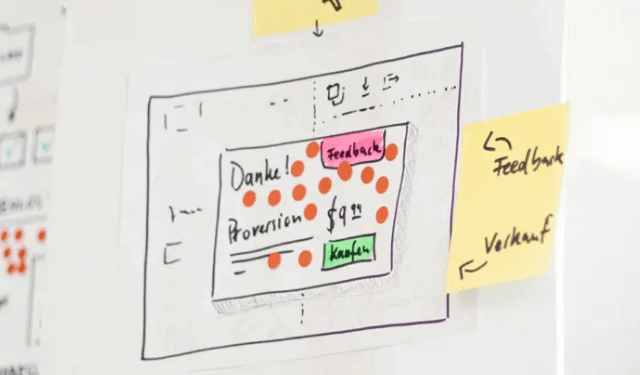To take an internet product from 0 to 1, the first step is to establish its positioning. So how do you find the right positioning? This article draws from practical case studies to analyze six key elements of product positioning, which I hope will be helpful to you.

1. Milestone Management Before Positioning
During the 0-1 phase, reaching a target of one million is not easy, especially in today’s knowledge-based payment and online education industries. Based on my experience with previous 0-1 projects, I often divide the journey from 0 to one million into three milestone targets: 0-50K, 50-300K, and 300K-1M.
The reasoning is that when a project is starting with nothing—no product, no traffic, no revenue—we first need to focus on winning a small victory. Winning serves as the best stabilizer, and fighting through challenges is the best training for both the operator and the team.
These three stages aim to solve the following key issues:
0-50K: Product positioning and design, MVP validation
50-300K: Content design, delivering on reputation
300-1M: High-ticket sales conversion design, process optimization
Breaking the Zero Barrier (0-50K)
To be honest, I think this is the hardest stage, and it tests your mental resilience the most. If you can get through it, one year feels like three years' worth of growth. This is the main reason I’ve been so passionate about 0-1 projects in recent years.
At this stage, there’s no product, no traffic, and no brand. It’s the phase where many startups and new projects tend to fail. Building a brand is tough—it requires spending on advertising and building a reputation, which small companies or projects might not be able to afford. So, in this phase, we focus on the product.
2. Execution Order: Product, Traffic, and IP
The first step in doing business is to have something to sell, then start promoting it.
This understanding is crucial. When you work at a platform, this isn’t a big issue, as most products are ready-made, and you don’t need to overthink it—just follow the framework. But when you start your own business or develop a knowledge-based IP, it’s different, as most people don’t start with a product.
For instance, last year, when I decided to focus on career development for network security professionals, I didn’t think about the product’s monetization path or how to deliver it. I just took some old career-related courses I’d developed years ago and considered them my product, then started working on traffic. But once the traffic started to grow, I realized much of it needed nurturing, and I didn’t have the right product for that. To avoid wasting the traffic, I ended up offering consulting services, which were time-consuming and unprofitable—this was like using an outdated method in a new scenario.
I’ve come to realize that in the knowledge-based payment industry and online education, only the product (note: a product is not just a course) provides value and solves users' problems. Advertising, business models, and IP only amplify that value. So, for new projects or knowledge-based IP, the first step is to create the product, then focus on traffic and IP.
3. Product Positioning: Finding a Relatively "Blue Ocean" Market
Going from 0 to 1 with a product is challenging, particularly in its design and positioning. The difficulty lies in identifying a relatively blue ocean market.
In 2021, when I felt the entrepreneurial bug, I wanted to design a product that didn’t exist in the current market. But every time I came up with an exciting idea, I’d search for it the next day and realize someone else was already doing it—and doing it well. It’s the classic situation of thinking up thousands of paths at night, only to return to being a worker in the morning. Today, truly untapped markets are rare. Even if they exist (like the supercomputing space I entered in 2023), they are hard to break into. The key is to be realistic and find a relatively blue ocean.
Once you’ve identified that blue ocean, think about how you can become a market leader in that space.
Why focus on becoming a market leader? First, if you don’t aim to be a leader from the beginning, you likely never will be. Second, if you don’t reach the top, your product or company might quickly fail in the competition.
Designing a strategy to become a leader depends on your resources, product matrix, market trends, and more, which can’t be covered in just a few sentences. Stay tuned for future articles in this series for more on this.
4. How to Identify a Blue Ocean?
Start by conducting a SWOT analysis. Assess your strengths and resources, and identify opportunities where you can consistently deliver high-value content. You can use diagrams, self-assessments, or discussions with others.
For example, in my first 0-1 project, a Huawei certification course, the market was relatively niche, with four large online competitors and two big offline competitors. It was feasible. I could leverage my offline teaching experience, reactivate former offline students (though carefully, due to potential conflicts of interest), and use employment resources and case studies. I knew marketing and sales conversion, and I had a basic team, including a teaching assistant. However, no one on the team knew much about generating traffic, as we were still thinking in offline terms.
For positioning, we couldn’t claim to be authoritative—Huawei didn’t authorize us. We also weren’t the first to market, not even in the top 20. Our instructors and their reputations couldn’t compete with others, and we had no pass rate data. So, we focused on employment and system integration projects, eventually deciding to target certification and employment. We aimed to be the best in this niche.
Another example is a product targeting annual salary increases for employed programmers. It was like a private advisory product for knowledge-based payments, focusing on high-net-worth clients and offering a short conversion path.
5. Avoid Low Prices with High Expectations
This is a psychological issue, similar to overburdening a fast-moving horse. Satisfaction levels tend to plateau after a certain point. So, from the start, don’t stretch your product’s value to the limit.
From my past user satisfaction surveys, I’ve observed that user satisfaction = actual value provided - user expectations / user expectations.
For example, if you buy an iPhone for $10,000, people will think it’s reasonable. But if you buy a Huawei phone at the same price, people will be curious about what makes it worth that much. If you buy a Xiaomi phone at that price, people will be shocked.
It’s the same when building a product. During the initial cold-start phase, offering discounts or relatively low prices can work. However, once you gain traction and visibility, raising prices becomes difficult. First, the product’s inherent value needs to be at least 10 times greater than the value delivered to the user. Second, you might find it hard to provide high value. Third, as you scale to millions or tens of millions, pricing will become a barrier to partnerships, collaborations, or resource exchanges.
6. Case Study: Product Positioning During the 0-1 Phase
From 2021 to 2022, I managed two 0-1 IT vocational education products for a large community, handling traffic and sales conversion. One product was certification-based, and the other was focused on employment. Both products have insightful stories and offer valuable lessons on finding a blue ocean within a red ocean.
1. Product Positioning Background
After over 20 years of intense competition, the IT training market had gone from red ocean to purple. Companies were lowering their admission standards, even targeting middle school students and assembly-line workers. In this scenario, a community platform with over 30 million registered users, primarily programmers, needed to find a breakthrough.
Programmers’ user journeys typically go through interest, learning, exams, training, employment, and job-hopping.
The current landscape had 5-6 leading companies dominating the employment, training, and job-hopping sectors—no chance of breaking into the top. Interest and learning weren’t essential needs and already had leaders. The only area left was certification.
There was Huawei’s ICT certification, but no programmer-specific certification, such as for front-end or back-end skills. Given the platform’s size and reputation, becoming the top provider in this space was feasible. The idea made perfect sense, so we chose IT certification.
2. Product Positioning’s Selling Point
The certification was positioned as the industry’s standard, with the selling point being that passing the exam qualified you for a P5-level job at a major company. Everyone was optimistic about it. The certification had three levels: a $200 Level 1 certification (equivalent to a P1 job), a $1,500 Level 2 certification (equivalent to P3), and a $5,000 Level 3 certification (equivalent to P5). The plan was to create a self-sustaining growth flywheel that would spin faster and lead to exponential growth.
Purely from a data perspective, this seemed entirely possible, given the brand, resources, money, and experienced team.
3. Pitfalls After Positioning
① Cheaper Products Might Be Harder to Sell
Surprisingly, the 200 RMB entry-level certification was extremely difficult to sell. Nobody paid attention to it. Despite numerous internal promotions over one or two months, beginners couldn’t pass the exam, and experienced users weren’t interested. Our initial plan, which assumed that sales would come naturally just by running ads, was completely unrealistic. We had to rely on a sales team to close deals, and brand recognition didn’t seem to help as much as we thought.
② ROI (Return on Investment) Was Extremely Low
Because we had to bring in a sales team, the ROI was dismal. To sell a product priced at 200 RMB, we ended up spending about 20 to 30 times the cost. The only hope was that the repurchase cycle would be shorter, allowing us to recover the costs faster.
③ Adding More Selling Points to the Product Blindly
The 200 RMB certification was still hard to sell, and no marketing tactics seemed to work. Sales teams were almost begging customers to buy. So, in a meeting, we decided to enhance the product, even though we knew it was a temporary fix. We hoped to turn things around before running into a dead end.
We offered free training to those who couldn’t pass the exam. For those who didn’t understand the material, we provided free guidance. If someone failed the exam on their first try, we gave them a second attempt for free. If they still couldn’t pass, we introduced a corporate scholarship program, allowing unlimited exam attempts within a set period, and offered a full refund of the exam fee upon passing. Additionally, we threw in a 500 RMB membership card, physical books, and access to a talent pool for job recommendations after passing. This once simple 200 RMB product became bloated with extras.
Finally, people started signing up for the certification, gradually growing from a few orders per month to a peak of 300-500 orders per month.
Once the process was running smoothly, we standardized operations, reduced the sales team, and returned the ROI to a normal level.
④ The Product Matrix Isn’t a Cure-All
Our original product matrix plan included basic products, hot-selling products, and profit-generating products.
For example, the employment-oriented product, priced at 19,800 to 49,800 RMB, was a training course with the selling point of securing internships at major companies. It was our profit-generating product.
However, the course structure and the certification exam system were identical. Delivery was via a system and documents, with the instructors only providing Q&A sessions. Employment was offered through internship agreements.
Conceptually, this all seemed sound. But when we actually implemented it, several problems emerged:
Changing User Perceptions Was Difficult: It was hard for users to understand the value difference between the high-priced product and the certification product. Since both helped with getting jobs at big companies and had the same curriculum, why wouldn’t they choose the cheaper certification?
Challenges in Traffic and Backend Delivery: At the time, we used in-house traffic, reaching about 30 million users through PUSH notifications, emails, SMS, private messages, and homepage/internal ads. Initially, the two products attracted their respective traffic, but eventually, we found that only the "big company" promise worked, so the ad campaigns for both products became nearly identical. Users, who were already confused, became even more bewildered.
Sales Overpromised: Sales teams naturally tend to overpromise. The team selling certifications promised almost everything short of guaranteeing job offers. As a result, the team selling the high-priced course had to promise actual job placement, saying certificates would be awarded as long as you passed the course. We were constantly watching each other, trying to prevent misinformation, especially when the traffic overlapped. The certification sales team would often tell potential buyers of the high-ticket courses, "It's all the same; why not try the 200 RMB certification first?"
The business hit a stalemate.
At this point, you couldn’t say the product was flawed, because it had already been set as the company’s annual strategic focus. It was hard to change anything unless you had solid data to back up your case, and a clear plan for what to do next.
For me at that time, the key was figuring out how to find a solution with the limited resources available. In short, we had to push forward. I worked on these two products for a full year.
By the end, the flywheel for both products had started spinning, with monthly revenue increasing by over 20%, reaching a typical revenue scale in the tens of millions. But the leadership said, “This is a billion-level product—you need to step it up.”
I knew this was the time to leverage my strengths: creating a system where traffic, sales conversion, and products worked in harmony, forming a well-functioning mechanism for explosive growth in sales.
How we did this will be a long story for another time, which I’ll cover in my next article.
Today’s share mainly focused on the 0-1 phase of product positioning, discussing six basic elements of product positioning, and sharing a practical case study. I hope this helps you develop a foundational understanding of product positioning.






